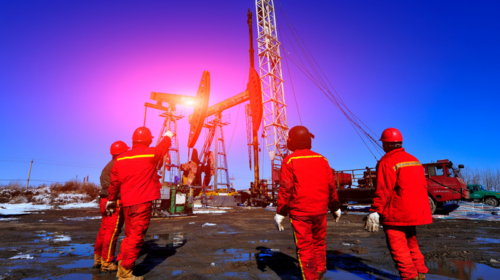The oil and gas industry has long been male-dominated, but today, more women are entering the field and taking on critical roles. In fact, according to the World Petroleum Congress, women represent about 22 percent of the workforce in this industry.
As female representation grows, so does the need to address occupational health hazards through a gendered lens. Studies suggest that women face elevated and unique risks in oil industry jobs. Chemical exposures, ergonomic strains, mental duress and more can take major tolls. Without proper safeguards and awareness, these dangers threaten not just women’s safety but also the sustainability of a diverse workforce.
This article will uncover the common health risks impacting female workers. The goal is twofold: To empower women with knowledge and to inspire positive change across the industry. No one should have to sacrifice their well-being for a paycheck. It is possible to cultivate both safe and inclusive oil and gas jobs, but getting there starts with understanding the risks.
The Importance of Health Awareness in the Oil and Gas Industry
Before examining specific dangers, it’s worth underscoring why women’s health demands urgent attention in the oil and gas industry. Society casts traditional gender roles that inadvertently lead industries to construct safety measures around male workers. As a result, many female workers are unaware of potential risks until they encounter them.
In short, occupational hazards in the oil and gas sector affect women more severely than men due to biological and social factors. Women also represent a growing talent pool that the industry can scarcely afford to lose.
Experts believe that female physiology can amplify the damage caused by oil and gas industry chemical exposures. Hormonal differences, pregnancy and other variables contribute to this increased susceptibility. At the same time, women remain underrepresented in oil and gas jobs. Isolation and lack of critical mass contribute to toxic work environments and cultures. Sexual harassment, bias and other behaviors deleterious to women’s health must continue to be addressed.
Clearly, understanding and mitigating health risks for female workers is imperative. But first, what exactly are those risks? Let’s review some of the most prominent hazards.
Common Health Risks Faced by Female Workers
Women in the oil and gas industry face a range of serious health and safety challenges. These include threats to reproductive health, chemical exposures, ergonomic strains and mental health impacts.
Reproductive Health
Female workers are vulnerable to reproductive issues stemming from chemical and physical hazards. Studies on petrochemical facilities have linked solvents to menstrual disorders, spontaneous abortion, preterm birth and more.
Similarly, exposure to heavy metals in mining can cross the placenta and cause fetal damage during pregnancy. Exposure to lead can damage the fetus as early as eight to10 weeks of pregnancy. Vibrations from machinery have also been tied to menstrual and fertility problems.
Such reproductive impacts compromise women’s health while also deterring their retention in the oil and gas industry.
Exposure to Chemicals
Now, let’s debunk some common myths. Working in the oil and gas industry is not a free ticket to tough skin; in fact, women might be at risk for skin cancer, such as melanoma, due to chemical exposure.
Oil and gas work inevitably entails exposure to hazardous chemicals. Think of anything from benzene in drilling fluids to silica dust from fracking sand. Research links this chemical exposure to elevated cancer rates among oil and gas workers, including skin, bladder and kidney cancer.
Chemicals are also tied to respiratory issues. Inhaling drilling-related chemicals can lead to bronchitis, asthma and other respiratory problems. These tiny particles remain suspended in the air and can enter the body through inhalation, causing serious damage to the respiratory system. Without proper controls and protections, these substances put women’s health at risk.
Ergonomic Hazards
Ergonomics refers to the fit between people and their work environment. Oil and gas worksites are rife with ergonomic hazards, from repetitive motions to heavy lifting. The machines and equipment used in oil and gas fields and refineries are also predominantly designed for men. These issues lead to strains and musculoskeletal disorders, which disproportionately affect women. Poor ergonomics undermine women’s health, performance and retention.
Mental Health
Women in oil and gas jobs face a host of mental health stressors, including workplace harassment and balancing family responsibilities with remote work. Isolation and lack of community at predominantly male worksites also take a toll. Studies link these factors to increased risks of anxiety, depression and substance use among female personnel.
A toxic work culture is quite literally toxic to the female workforce. Nearly one out of every three women in the industry reportedly experienced harassment over the last five years, with the aftermath potentially resulting in poor health behaviors such as disordered eating or lack of exercise, coupled with harmful effects such as high blood pressure or cardiovascular disease.
Psychosocial risks remain widely overlooked despite their clear health impacts.
Preventive Measures and Best Practices
While risks abound, there are also proactive steps that can safeguard women from threats:
- Use of Protective Equipment. Safety first! Taking the time to understand the vital role of personal protective equipment, and the proper use of hazmat suits, protective gloves or respiratory masks could be life-saving. Providing female employees with properly fitting protective gear should be a priority.
Note that, as with machinery, this equipment must be tailored specifically to women. Management must also enforce proper use via training, workplace culture and oversight. - Comprehensive Training. Regular hands-on training is essential to prepare female employees for the potential dangers they may face. This training should cover various topics, including safety protocols, equipment operation and environmental regulations.
However, learning how to respond effectively in medical emergencies is equally important. Companies should require comprehensive CPR and AED training that covers techniques like chest compressions, establishing an airway and using defibrillators. - Medical Monitoring. Regular health screenings enable early identification of chemical exposures, cancers, musculoskeletal disorders and other issues. Surveillance should cover both physical and mental health. Identifying issues at an early stage can save distress and unveil the correct medical treatments swiftly.
Maintaining Work/Life Balance
Long shifts and remote worksites contribute to burnout, not to mention women also tend to shoulder family duties. Promoting services like childcare and flexible policies allow women to prioritize self-care, social ties and their identity beyond work, which helps maintain mental health.
A Safer Future for Women
Despite the general awareness of risks linked to extractive industries such as oil and gas, many remain oblivious to the unique struggles faced specifically by women. Yes, they are empowered. Yes, they are resilient. But they also need better-suited measures that address their health needs directly.
Greater awareness and openness about health hazards is the first step, but earnest commitment to prevention is what we need to translate awareness into impact. Industry leaders must create cultures of safety. And they can do so by implementing protective measures and monitoring employees vigilantly.
Women bring immense value to the industry through their talents, insights and diversity. Their growing numbers are a bellwether of progress. Realizing the full benefits of women’s participation, however, depends on minimizing health risks. With these proactive steps, companies can defend every employee’s fundamental right to safety. Unmasking dangers is difficult but necessary work. It paves the way for women to advance and thrive alongside men in building the world’s energy future.
Steven John Cumper, B.App.Sc. (Osteo.), M.Ost., is a businessman with a strong background in biomedical science and osteopathic medicine. He founded Medshop while studying at RMIT University in Australia, expanding its reach to markets in Papua New Guinea, Singapore and Malaysia. In September 2021, the Bunzl Group acquired a majority stake in Medshop, but Cumper remains involved as the Managing Director (Medshop Group). His journey from Zimbabwe to the U.K. and Australia reflects his dedication to academia and entrepreneurship, combining diverse knowledge and experience.
Oil and gas operations are commonly found in remote locations far from company headquarters. Now, it's possible to monitor pump operations, collate and analyze seismic data, and track employees around the world from almost anywhere. Whether employees are in the office or in the field, the internet and related applications enable a greater multidirectional flow of information – and control – than ever before.






